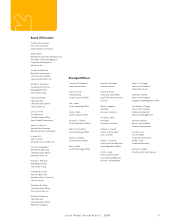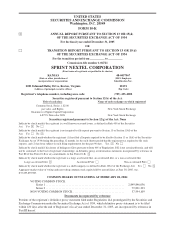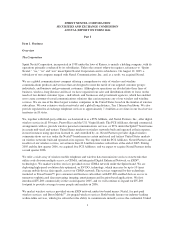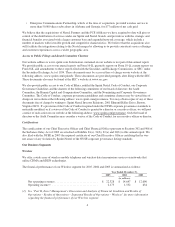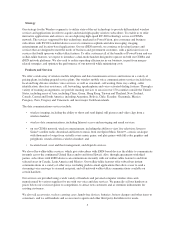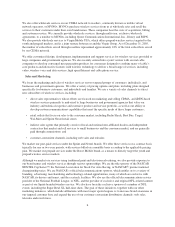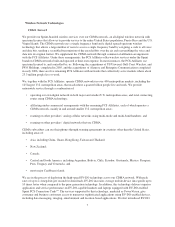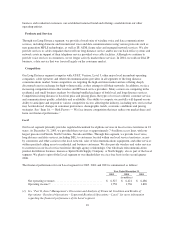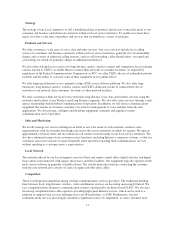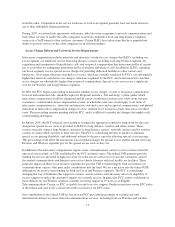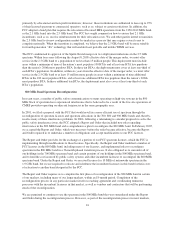Sprint - Nextel 2005 Annual Report Download - page 20
Download and view the complete annual report
Please find page 20 of the 2005 Sprint - Nextel annual report below. You can navigate through the pages in the report by either clicking on the pages listed below, or by using the keyword search tool below to find specific information within the annual report.
handsets in support of our Nextel branded services, as well as anticipated handset and infrastructure
improvements for those services, our operations will be adversely affected.”
Competition
We believe that the market for wireless services has been and will continue to be characterized by intense
competition on the basis of price, the types of services offered and quality of service. We compete with a number
of wireless carriers, including three other national wireless companies: Cingular Wireless, Verizon Wireless and
T-Mobile. We also compete with regional providers of mobile wireless services, such as Alltel Corporation.
Competition will increase to the extent that new firms enter the market as additional radio spectrum is made
available for commercial wireless services. We also expect competition to increase as a result of other
technologies and services that are developed and introduced in the future, including potentially those using
unlicensed spectrum, including wireless fidelity, or WiFi. The continued addition of MVNOs also contributes to
increased competition.
Although pricing is an important factor in potential customers’ purchase decisions, we believe that our targeted
customers are also likely to base their purchase decisions on quality of service and the availability of
differentiated features and services that make it easier for them to get things done quickly and efficiently. We
believe we compete based on our differentiated service offerings and products, including our PowerVision
applications and push-to-talk walkie-talkie feature. Several of our competitors have introduced high-speed data,
imaging, entertainment and location-based services and walkie-talkie-type features that are designed to compete
with our differentiated products and services. Other competitors have announced plans to introduce similar
services. If our competitors are able to provide applications and features that are comparable to ours, any
competitive advantage from the differentiation of our services from those of our competitors would be reduced.
To the extent that the competitive environment requires us to decrease prices or increase service and product
offerings, our revenue could decline or our costs could increase. Competition in pricing and service and product
offerings also may adversely impact customer retention. See “Item 1A. — Risk Factors — We face intense
competition that may reduce our market share and harm our financial performance.”
Long Distance
Through our Long Distance segment, we provide a broad suite of wireline voice and data communications
services targeted to domestic business and residential customers, multinational corporations and other
communications companies. As one of the nation’s largest providers of long distance services, we operate
all-digital long distance and Tier 1 IP networks.
The financial performance for our Long Distance segment for 2005, 2004 and 2003 is summarized as follows:
Year Ended December 31,
2005 2004 2003
(in millions)
Net operating revenues ................................. $ 6,834 $ 7,327 $ 8,005
Operating income (loss)(1) .............................. 512 (3,589) (1,442)
(1) See “Part II, Item 7 Management’s Discussion and Analysis of Financial Condition and Results of
Operations — Results of Operations — Segmental Results of Operations – Long Distance” for more
information regarding the financial performance of the Long Distance Segment.
Strategy
In order to maintain market share in an increasingly competitive long distance communications environment, our
Long Distance segment focuses on expanding its presence in the data communications markets by utilizing our
principal strategic assets: our high-capacity national fiber-optic network, our Tier 1 IP network, our base of
9


